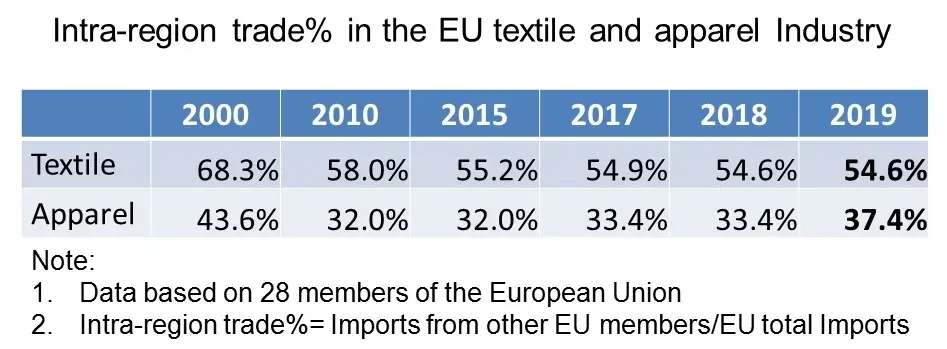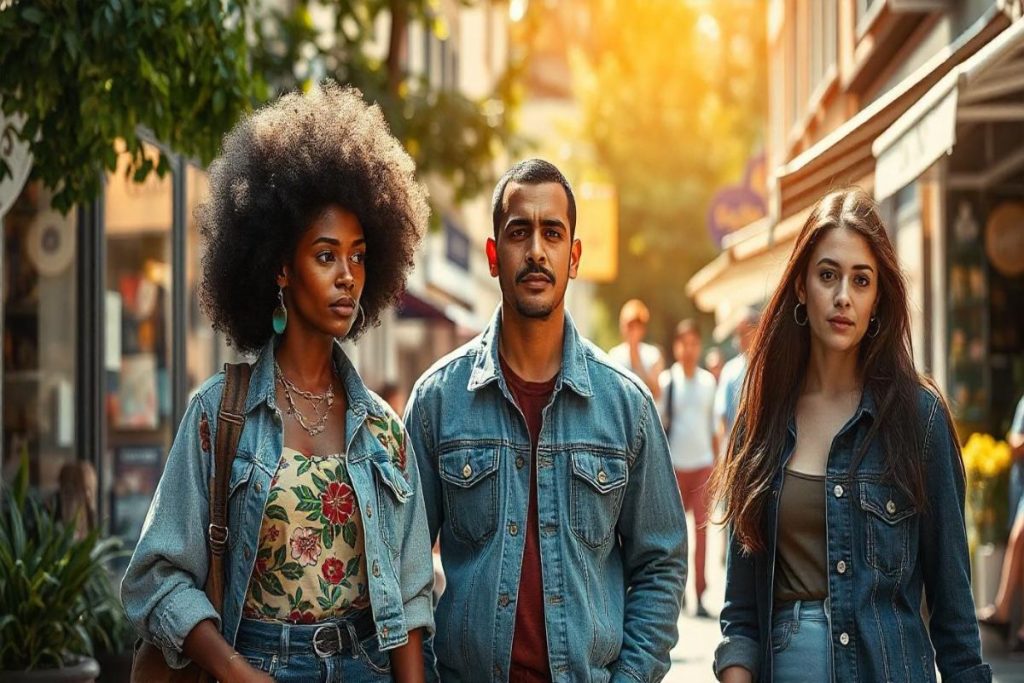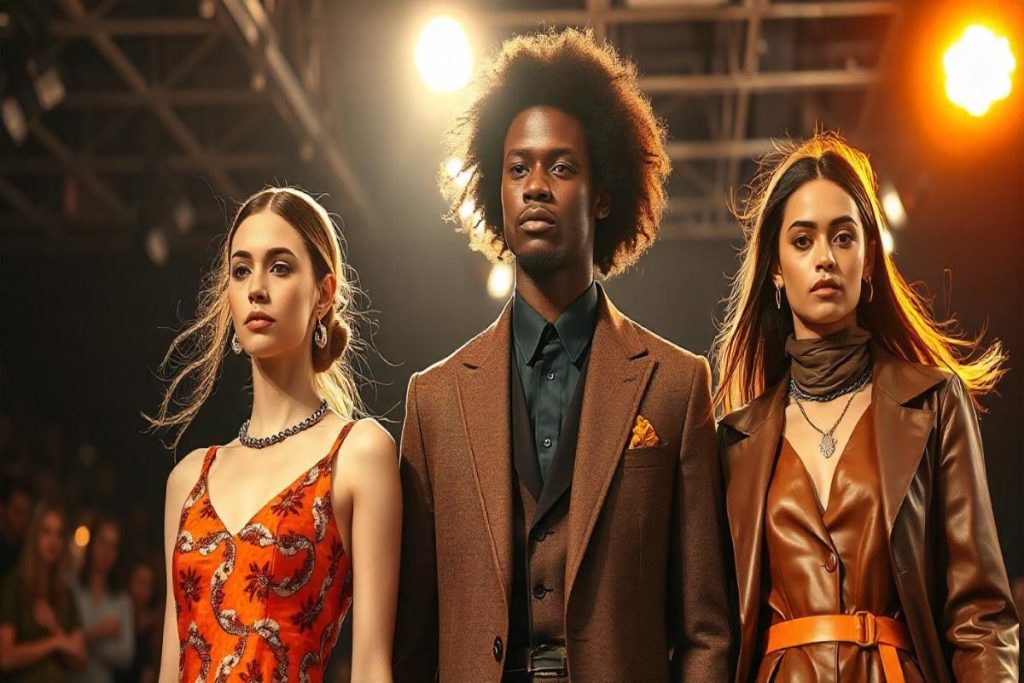In the wake of the recent fashion industry tariffs imposed by the Trump administration, the global fashion landscape is experiencing unprecedented turbulence. This so-called “tariffpocalypse” threatens to spark a fashion trade war, causing significant disruptions to supply chains and raising costs for brands and consumers alike. As volatility grips the marketplace, marked by declining consumer confidence in fashion, designers like Ralph Lauren strive to make an impact through spectacular runway shows that highlight their latest collections. The current climate has left luxury fashion fluctuations in the spotlight, challenging both established brands and emerging designers to navigate these tumultuous waters carefully. With tariffs as high as 245% on goods from key manufacturing hubs like China, the repercussions of these economic policies are becoming increasingly evident in the industry’s bottom line.
The ongoing changes in international trade policies are throwing the fashion sector into disarray, as tariffs designed to protect American interests have broader implications. Often referred to as the ‘fashion trade war,’ this climate of uncertainty puts added pressure on brands to adjust their business strategies quickly. The stakes are high for renowned names like Ralph Lauren, whose recent collection launch sent conflicting signals amid concerns over economic fluctuations and weakening consumer trust. As luxury markets grapple with new tariffs, industry insiders are keeping a close watch on how brands adapt to these shifts, adjusting to heightened volatility in consumer behavior and expectations. The dynamic between manufacturers, retailers, and consumers is now more fragile than ever, and the industry must innovate and strategize to thrive.
Understanding the Impact of Trump’s Tariffs on the Fashion Industry
The recent announcement of Trump’s tariffs has sent shockwaves across the fashion industry, where brands are grappling with unprecedented changes. Dubbed the “tariffpocalypse” by industry insiders, these tariffs are designed to protect domestic jobs but have left fashion brands teetering on the edge. With tariffs as high as 245% on products sourced from China, companies that have relied on these supply chains now face drastically increased costs that could force them to reevaluate their business models.
For many fashion houses, the increased costs associated with tariffs are not just a financial burden; they pose a significant threat to consumer confidence in luxury goods. As consumers become more aware of price hikes stemming from these tariffs, spending patterns could shift significantly, leading to reduced sales for even the most established brands. This environment of uncertainty makes the impact of the tariffs a critical topic for anyone involved in the fashion trade.
The Fashion Trade War: Effects on Consumer Confidence and Markets
The ongoing fashion trade war continues to erode consumer confidence, especially among luxury fashion consumers. As tariffs are implemented, the cost of goods has risen dramatically, leaving shoppers to reconsider their purchases. Disappointing earnings reports from major luxury brands like LVMH indicate that the effects are already being felt, as consumers react to higher prices for coveted items. The dip in consumer confidence can be linked to the rising costs and the uncertain future of trade agreements, resulting in decreased impulsive buys of premium products.
Moreover, luxury brands are finding themselves in a precarious position where aggressive pricing strategies may soon become necessary. As companies struggle to maintain their profit margins amidst heightened operational costs, it will be interesting to see how they adapt their marketing strategies. Brands may need to take a proactive approach by emphasizing the quality and craftsmanship that their clothes embody, in order to reassure consumers that their investments are worthwhile despite the price hikes.
Ralph Lauren’s Response to Tariffs: A Case Study
Amidst the chaos created by Trump’s tariffs, Ralph Lauren has adopted a strategic approach to maintain brand presence and consumer engagement. The designer’s recent fashion show, showcasing his autumn/winter 2025 collection, served as a beacon in troubling times. Set in a stunning historic venue in New York City, the event attracted notable celebrities and media attention, reinforcing the brand’s image as a luxury icon. This high-profile showcase not only highlighted Ralph Lauren’s commitment to excellence but also allowed the brand to sidestep the bleak headlines around the fashion industry’s turmoil.
While many brands struggle to determine the next steps amidst tariff uncertainties, Ralph Lauren exemplifies a brand focused on redefining its narrative. By leveraging events that emphasize heritage and craftsmanship, Lauren aims to connect emotionally with consumers, ensuring brand loyalty remains intact. In a time where luxury fashion fluctuations become rampant, sailing through such periods with dynamic branding strategies may very well enable Ralph Lauren to not only survive but thrive in this challenging market.
Navigating Supply Chain Disruptions in Fashion
The fashion industry has historically relied on complex, Asia-centric supply chains, which have been severely disrupted by recent tariffs imposed by the Trump administration. With significant tariff rates targeting imports from China and other manufacturing hubs, brands are left scrambling to find alternative sourcing strategies. These supply chain disruptions not only affect product availability but also increase lead times, making it increasingly challenging for fashion houses to meet market demands.
As many brands reevaluate their manufacturing processes, there is an underlying hope that these challenges may drive innovation within the industry. Companies might look to diversify their supply sources beyond traditional hubs by exploring manufacturing options in countries with lower tariffs, which could open up new markets and opportunities. Streamlining operations and investing in technology to optimize supply chains could ultimately help brands mitigate the adverse effects of the ongoing trade war and emerge stronger.
Luxury Fashion Fluctuations: Challenges and Opportunities
Luxury fashion is not immune to market fluctuations, especially in the wake of aggressive trade policies. The recent downturn in the stock prices of major players like Kering and LVMH illustrates how sensitive the market can be to external economic pressures. As high-end consumers become more cautious about discretionary spending, brands are faced with the double challenge of maintaining profitability while simultaneously addressing the heightened scrutiny from investors and the media.
However, within these challenges lie opportunities for innovation and reinvention in the luxury segment. Brands that can adapt their strategies to focus on unique value propositions—offering exceptional quality, sustainability initiatives, or personalized customer experiences—may find themselves positioned favorably. The looming presence of tariffs may also encourage brands to be more transparent about their pricing strategies, potentially nurturing a deeper relationship with consumers who value honesty and integrity in brand communications.
The Emotional Connection: Key to Surviving the Tariff Crisis
In uncertain times, fostering an emotional connection with consumers can be a game changer for luxury brands. As prices rise due to tariffs, brands need to prioritize building trust and loyalty among shoppers who are increasingly cautious about their spending. By emphasizing heritage, storytelling, and engagement through targeted marketing campaigns, companies can evoke a sense of belonging and desirability that motivates consumers to continue investing in their brand.
Efforts to deepen this emotional connection can take many forms, such as exclusive events, personalized shopping experiences, or collaborations with renowned artists and designers. By creating unique and memorable experiences that resonate with consumers, brands can reinforce their status not just as providers of luxury goods but as key players in their customers’ lives. As the fashion industry faces the looming storm of tariffs, those brands that can effectively communicate their values and foster emotional ties are likely to navigate these turbulent waters successfully.
The Future of Fashion Brands in a Post-Tariff Era
As the fashion industry adapts to the realities of post-tariff economics, the path forward will require resilience and strategic foresight. Brands that have invested in agility and innovation will likely emerge as leaders in this new landscape. The recent challenges have served as a wake-up call for many companies to reevaluate their reliance on traditional business models and explore new avenues for growth and engagement in an evolving marketplace.
Looking ahead, fashion brands must consider how consumer priorities may shift in response to economic pressures. The eventual re-establishment of consumer confidence may hinge on brands demonstrating their commitment to quality and sustainability. As fashion evolves, embracing transparency and collaboration will be crucial in navigating the uncertain terrain initiated by tariffs, and those brands that can resonate with an evolving consumer mindset will pave the way for a more sustainable and successful future.
The Importance of Marketing Strategies in Times of Crisis
In times of crisis, effective marketing can be the lifeblood for fashion brands affected by tariffs and declining consumer confidence. As industry experts suggest, utilizing marketing strategies that focus on storytelling, brand heritage, and community engagement is key. With consumers facing increased product prices, brands need to clarify their value propositions and demonstrate the quality and craftsmanship behind their products to maintain loyalty and interest.
Additionally, hosting events and leveraging digital platforms can offer brands the opportunity to engage with their audiences in a personal and meaningful way. For instance, exclusive previews, virtual fashion shows, and interactive marketing campaigns can keep consumers invested and connected to the brand’s narrative. By adapting marketing strategies to the current landscape, companies can build a solid foundation that helps weather the storm of economic unpredictability.
Exploring New Markets Amidst Trade Uncertainty
As tariffs disrupt traditional supply chains, fashion brands have a unique opportunity to explore new markets and diversify their customer bases. By looking beyond established platforms, businesses might find untapped potential in emerging markets, where demand for luxury goods continues to grow despite global uncertainties. For instance, investing in local partnerships or tapping into the e-commerce boom in regions with a rising middle class can yield significant benefits.
Moreover, establishing a presence in these new markets allows brands to decrease their overall reliance on traditional hubs like China and Vietnam. By expanding into regions with lower tariffs or even exploring localized production methods, fashion companies can not only protect their margins but also cultivate a sense of community with consumers. This strategic shift may offer a silver lining, allowing brands to adapt to changes while continuing to honor their commitment to quality and innovation.
Frequently Asked Questions
What are the implications of Trump tariffs on the fashion industry?
Trump tariffs have significantly impacted the fashion industry by increasing costs on imported goods, particularly affecting brands that rely on overseas manufacturing. Tariffs can reach as high as 245% on products from China, causing brands to reassess pricing models and supply chains, which may ultimately deter consumer confidence in fashion.
How does the ongoing fashion trade war affect luxury fashion brands?
The fashion trade war, fueled by Trump’s tariffs, introduces uncertainty for luxury fashion brands like LVMH and Kering. These companies have witnessed stock declines and may face increased production costs. The challenge lies in maintaining consumer desire while adjusting to a volatile market influenced by tariff regulations.
What has been the effect of tariffs on the Ralph Lauren collection?
The Ralph Lauren collection, recently showcased to a star-studded audience, exemplifies resilience in the face of Trump’s tariffs. However, with increased production costs from tariffs, the brand may need to adjust pricing or seek new markets to maintain consumer confidence and attract shoppers amidst financial uncertainty.
How can consumer confidence in fashion be restored amidst tariff chaos?
Restoring consumer confidence in fashion during tariff-related tumult may require brands to enhance their marketing strategies, emphasizing heritage and craftsmanship. As prices rise due to tariffs, engaging storytelling and emotional connections can foster loyalty and reshape perceptions amid uncertainty.
What strategies can fashion brands implement during the luxury fashion fluctuations caused by tariffs?
In light of luxury fashion fluctuations due to Trump tariffs, brands should focus on strategic marketing, product positioning, and showcasing unique craftsmanship. Hosting exclusive events can also help maintain consumer interest and reinforce brand value, further navigating the challenges posed by increasing costs.
| Key Point | Details |
|---|---|
| Tariff Announcement | Trump announced ‘liberation day’ tariffs, causing chaos in the fashion industry. |
| Impact on Fashion Sector | The fashion industry is bracing for a trade war, affecting supplies and increasing costs. |
| Ralph Lauren’s Show | Ralph Lauren unveiled his autumn/winter 2025 collection amidst financial volatility in the industry. |
| Effects on Stocks | Shares of major brands like Kering and LVMH fell sharply following the tariff announcement. |
| Supply Chain Challenges | High tariffs on imports from China and Vietnam have heavily impacted established supply chains. |
| Future Opportunities | Industry experts suggest focusing on brand heritage, craftsmanship, and emotional connections to customers. |
Summary
Fashion industry tariffs have created significant challenges for the sector as it adapts to the uncertainties of a potential trade war. While the tariffs have triggered disruptions and financial strain, key players like Ralph Lauren are finding ways to navigate these turbulent times. The industry’s focus is shifting towards strategic branding and emotional engagement with consumers as they brace for rising costs and aim to maintain market strength amidst financial volatility.



